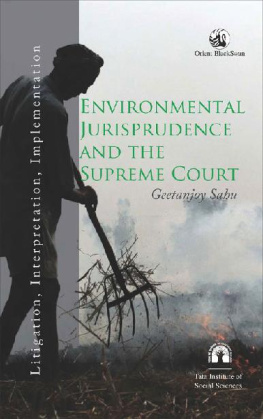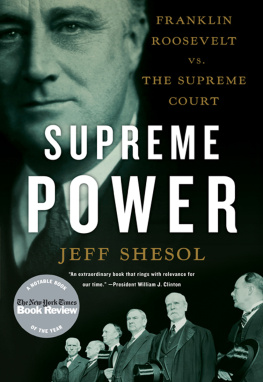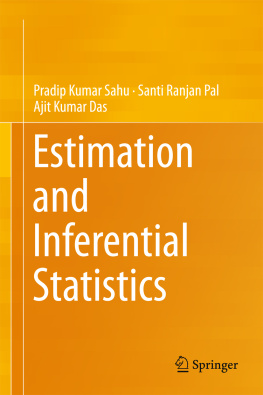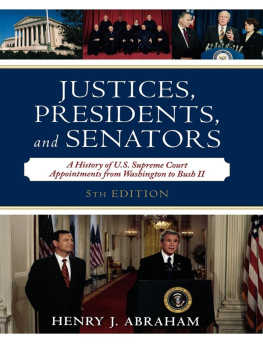Orient Blackswan Private Limited
Registered Office
3-6-752 Himayatnagar, Hyderabad 500 029 (A.P.), INDIA
e-mail:
Other Offices
Bangalore, Bhopal, Bhubaneshwar, Chennai,
Ernakulam, Guwahati, Hyderabad, Jaipur, Kolkata,
Lucknow, Mumbai, New Delhi, Noida, Patna
Orient Blackswan Pvt. Ltd. 2014
First published by Orient Blackswan Pvt. Ltd. 2014
eISBN 978 81 250 5602 7
e-edition:First Published 2014
ePUB Conversion: .
All rights reserved. No part of this publication may be reproduced, distributed, or transmitted in any form or by any means, including photocopying, recording, or other electronic or mechanical methods, without the prior written permission of the publisher, except in the case of brief quotations embodied in critical reviews and certain other noncommercial uses permitted by copyright law. For permission requests write to the publisher.
Foreword
T his book is unique in the sense that it makes a cumulative assessment of the greennessthe pro-environment bent of the judgments delivered by the Supreme Court of India in the last three decades (19802010) and presents before the readers a broad canvas where patterns of greenness differ in shade and in consistency, and where, at places, grey areas emerge. One very important facet of the book is its study of whether the greenness of the judgments fades away in their implementation and what the net result on the ground is. The author has earnestly carried out empirical research and an objective analysis of the subject by taking inputs from jurists, scholars, judges and lawyers.
The emergence of green attitudes in the judicial spectrum coincides with the Supreme Courts interpretation of constitutional promises in favour of the poor, the illiterate, the disadvantaged and the downtrodden. For achieving these promises, the Supreme Court liberated locus standi from the narrow clutches of traditional overhang and developed a new jurisprudence of social action, now known as the public interest litigation (PIL). Shaped in its contours and procedural conundrums by various judgments of the Supreme Court, PIL is now an important part of the Indian judicial system. These changes and innovations have undoubtedly boosted popular perceptions of the Supreme Court as being the final saviour of democracy. However, while some praise the Court for its activist role, others accuse it of over-activism and of transgressing the principle of separation of powers.
This book raises several intriguing questions and issues, as yet inadequately explored or considered. It will be worthwhile for scholars to take up in greater depth in the future, the emergence and development of PILs, a holistic treatment of which should unveil some fascinating multidimensional patterns and trends of change. For example, even a brief look through the current volume reveals that while the Ratlam Municipality case (1980) endeavoured to activate local action in protecting the environment, the S. P. Gupta case (1981) brought the issue of environmental justice within the constitutional domain of redressal through corrective writs. In S. P. Gupta, Justice Bhagwati emphasised the concept of public rather than private injury in public interest matters. He enumerated instances of discharge of effluents into a river or a lake and emission of noxious gases into the atmosphere as examples of injury not to a specific individual or to a determinate class, but rather to the public in general. Thereafter, the focus of locus standi, particularly in environmental matters, shifted from private injury to public injury. The idea that the breach of public duty should not be allowed to go unchallenged merely because no one had received a specific legal injury, along with the understanding that ignoring the breach would promote disrespect for the rule of law, revolutionised the idea of justice. The transformation of the definition of aggrieved person in litigation opened up new challenges pertaining to the constitutional protection of collective social, economic and political rights and interests. This legal paradigm has been followed in environmental matters as well as in other areas and with the passage of time has assumed its own jurisprudential identity.
However, the change of focus from localised social action to constitutionalised redressal had both supporters and detractors. Some felt that encouraging grassroots action would have stabilised local awareness on human rights and environmental issues, thereby making it easy for the people to seek relief in lower courts and to ensure proper implementation of environmental judgments. Others, however, felt that the environmental issues are of much wider scope and dimension and require constitutional remedies and corrections from the high courts and the Supreme Court.
After the enactment of the National Green Tribunal Act, 2010, most environmental issues have gone before the Tribunal. The Act bars j urisdiction of the civil courts, thereby rendering the local action principle used in Ratlam Municipality more or less ineffectual. However, the current volume confines itself only to the judgments of the Supreme Court between 1980 and 2010 and does not, therefore, examine the role of the National Green Tribunal in shaping Indian environmental jurisprudence. In any case, such a task will become possible after a few years, as the benches of the Green Tribunal have become functional only very recently.
Another fascinating aspect of this book is its detailed discussion of various national and international developments in the realm of politics, society, economics, development and law, and the manner in which these have affected environmental governance in the country. Two key issues may be highlighted here, namely, the Supreme Courts interpretation of environmental rights and their importance and its approach to varying conceptions of the greater public interest, particularly as determined by state initiated infrastructure and mega development projects. Under the Supreme Courts aegis, the definition of the term life mentioned in Article 21 of the Constitution has been greatly expanded, both in the areas of human rights and environment. However, the inter-relationship of nature with human beings and the concept of what development means remain the core issue in all environmental litigations. It is not possible to assess the parameters of development unless the exploitation of natural resources that such development entails is tested on the principles of subservience to common good in the best possible manner as provided by the Constitution. The principle that humans are an inalienable part of nature was consciously accepted only in the aftermath of the Stockholm Convention (1972), upon the realisation that men have a great potential to destroy nature and its resources and that it is in sustenance of nature that the ultimate welfare of all human beings lies. However, this understanding seems to have done little to mitigate environmentally destructive state, institutional and individual human actions. This is clear from the conditions prevailing today, with the twin threats of increased greenhouse emissions and dangerous climate change steadily looming closer.
The Supreme Court, over the past two decades, has shown cognisance of the dangers of environmental degradation and has incorporated internationally accepted environmental principles, such as the polluter pays principle, precautionary approach, intergenerational equity and doctrine of public trust in its interpretations of Article 21. The author recognises these developments as positive but questions the Supreme Courts contradictory approach in applying these principles in different situations. The book analyses 191 environmental judgments delivered by the Court between 1980 and 2010, looking at them from different angles and tracing changes in policies, judicial perceptions and in executive actions and inactions. Many of these judgments reaffirm constitutional principles and international environmental commitments but differ in their final conclusions, particularly when it comes to the delicate task of defining the scope of sustainable development in respect of the facts of a particular case. The prevailing political environment, individual ideology and perception of the judges often make a very real impact on the decision making process. This can easily be perceived by looking at inconsistencies in judicial approach to the same subject during different time periods or contrary judicial views regarding the application of environmental principles while dealing with infrastructure projects.






